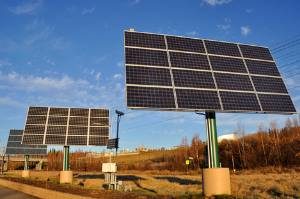Microgrids involve a small network of energy users who draw power from a local source of energy. While typically connected to a larger network, microgrids can function independently and lead to benefits for the environment and cost savings for customers.
Microgrids are cropping up in various locations on an experimental basis. However, some neighborhoods are being built that will draw energy from their own microgrid. For example, the Fort Collins Zero Energy District in Colorado aims to create the same amount of energy as what the community uses.
The following looks at some aspects of microgrids, and how they can prove beneficial.

When people refer to “the grid,” they mean the interconnected, vast network of power plants in the country that create electricity for businesses and homes to use. A microgrid operates while connected to this national grid but can operate on its own. Microgrids are typically powered by generators, batteries, and renewable energy such as wind power and solar panels, according to the U.S. Department of Energy.
Depending on the power source used, microgrids can run indefinitely, according to the Department of Energy. They also can run on alternative energy sources, since they are providing power to a smaller area, such as a smart neighborhood.
For example, large power plants often burn coal to meet the energy needs of millions of customers, which leads to more carbon dioxide released into the atmosphere. Microgrids, because of the smaller size, can use solar panels, wind turbines, and other eco-friendly power sources. Also, because the power source is local, microgrids can also provide a more reliable power source and reduce blackouts caused when larger systems are damaged or undergoing repairs.
Microgrids can prove much more efficient and save customers money. There is a great deal of energy loss transferring electricity from power plants to homes, in addition to the estimated 64% of energy lost converting fossil fuels to electricity, according to Curiousmatic. The local energy source is more efficient, meaning customers only pay for the energy they use. A study by the Massachusetts Institute of Technology found that microgrids could save customers money, and cut down on carbon emission if used for neighborhoods in Boston.
Microgrids are designed to store energy to smooth out any interruptions from the power source. For example, the energy stored within the system can be tapped into if the sun moves behind clouds for an extended period or the wind stops blowing, impacting solar panels or wind turbines. The storage cells also ensure that any energy produced by the system does not go to waste.
Some states are attempting to spur investment into the microgrid industry by offering grants and loans.
Connecticut, for example, offers grants for construction of microgrids that support critical facilities. This came about because widespread power outages have impacted critical facilities in the past. The program allocates up to $15 million each year for local microgrid projects that benefit critical facilities such as hospitals, police and fire stations, water treatment plants, sewage treatment plants, public shelters, and correctional facilities.
California offers grants for projects that bring clean energy ideas to the marketplace through its Electric Program Investment Charge (EPIC).
Microgrids seem both a common-sense approach to energy issues, as well as one that can have a positive impact on the environment. Look for the trend into microgrids to continues as policymakers look for new ways to make modern living more sustainable.